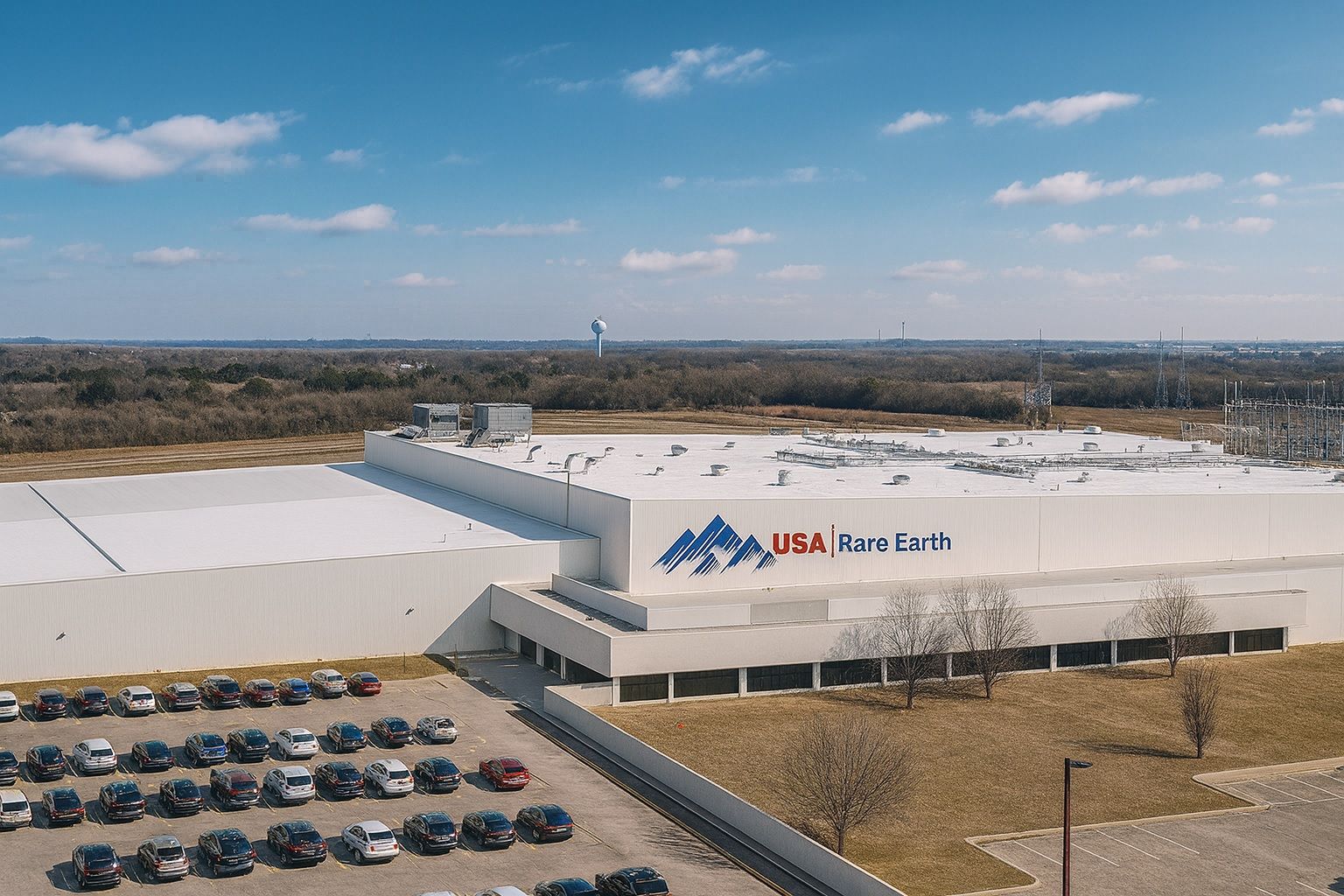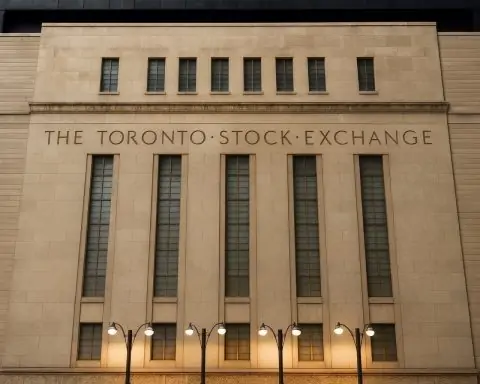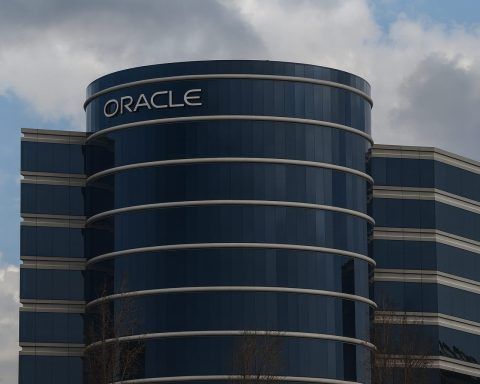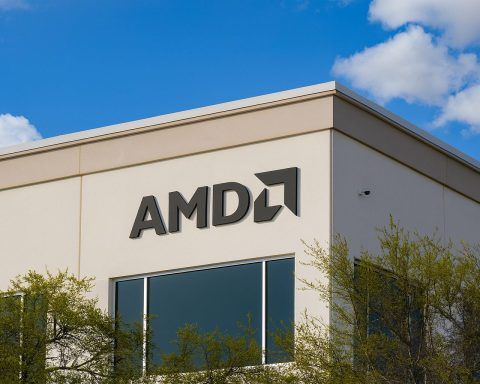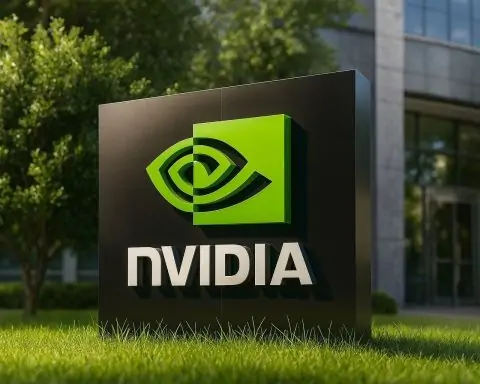USA Rare Earth, Inc. (NASDAQ: USAR) is a development-stage rare-earth miner and magnet-maker founded in 2019, publicly listed via SPAC on March 14, 2025 [1]. Its flagship asset is the Round Top Mountain deposit in Texas (via a JV with Texas Mineral Resources), rich in heavy rare-earths like dysprosium and terbium [2]. USAR is building a vertically integrated “mine-to-magnet” supply chain: mining Round Top, processing oxides, and manufacturing NdFeB magnets at a plant in Stillwater, Oklahoma (expected online ~2026, initially 1,200 tpa expanding to ~5,000 tpa) [3] [4]. In late September 2025 USAR announced a transformative acquisition of UK-based Less Common Metals (LCM) – a top ex-China rare-earth alloy maker – for $100M cash plus shares [5] [6]. The deal instantly gave USAR critical midstream capabilities. As of Oct 9, 2025, USAR’s stock had skyrocketed to the low-$30s – roughly 5× its price earlier in 2025 – valuing the company at about $2.5–3.0 billion [7] [8]. USAR has no revenues yet (still pre-commercial), posted a Q2 2025 net loss of ~$142 M and ~$120 M cash on hand (no debt) [9]. Most analysts rate USAR a Buy (despite sky-high share prices) but caution that its future hinges on execution and any government support [10] [11]. Recent developments – a new CEO (Barbara Humpton, ex-Siemens USA), the LCM deal, and reports of high-level White House discussions – have driven media and investor excitement, though no official government funding has been announced as of Oct 10, 2025 [12] [13].
Company Background & Operations
USA Rare Earth’s mission is to rebuild a full U.S. rare-earth-to-magnet supply chain. Its core project is the Round Top deposit in West Texas, a unique above-ground lithium- and rare-earth-rich hill containing nearly all 17 REEs (notably heavy elements dysprosium, terbium) plus gallium, beryllium, etc. [14] [15]. Through a JV with Texas Mineral Resources, USAR controls the Round Top rights and is developing mining plans there [16]. On the downstream end, USAR is constructing a state-of-the-art NdFeB permanent magnet factory in Stillwater, Oklahoma, targeting EV motors, wind turbines, defense and industrial markets [17] [18]. This facility’s first phase (~1,200 metric tons/year by 2026) will serve multiple sectors, with a planned expansion to ~5,000 tpa to become one of North America’s largest magnet makers [19] [20].
USAR’s strategy is “mine-to-magnet” vertical integration: it aims to control everything from mining ore to delivering finished magnets. This is a direct response to China’s near-total dominance of this chain (China produces ~90% of refined rare earths and magnets [21]). By integrating Round Top mining with on-site oxide separation (the company has piloted proprietary separation for heavy REEs) and with the Oklahoma magnet mill, USA Rare Earth hopes to supply the U.S. with domestically sourced magnets “that hasn’t existed in decades” [22] [23].
Crucially, USAR recently bolstered its middle (“midstream”) capabilities by announcing in September 2025 the acquisition of Less Common Metals (LCM), a UK-based rare-earth metals/alloys specialist [24] [25]. LCM is among the only facilities outside China that can produce high-grade light and heavy rare-earth metal alloys at scale [26] [27]. This gives USAR immediate access to specialized alloys (like NdPr metal for NdFeB magnets and samarium-cobalt for high-temp magnets) and advanced casting technology [28] [29]. USA Rare Earth’s Chairman Michael Blitzer hailed the LCM deal as creating “the first and only true mine-to-magnet supply chain in the West” [30] [31], a step-change that would have taken years if built from scratch. (USAR plans to integrate LCM’s expertise into the Oklahoma plant and eventually replicate such processing in the U.S.) [32] [33]. By combining Round Top’s vast ore (light + heavy REEs) with LCM’s processing know-how and its magnet plant, USAR truly spans upstream (mining), midstream (refining/alloy), and downstream (magnet) segments [34].
Financial & Stock Market Status
USA Rare Earth went public via merger with SPAC Inflection Point Acquisition Corp II in March 2025 [35] [36]. The SPAC funding injected ~$50 M and valued USAR at about $870 M at closing [37]. Initially trading near the typical SPAC baseline (~$10), USAR shares sat in the high teens by late September 2025. In early October 2025 the stock then exploded – driven by a string of positive news (see next section). By Oct 9, 2025 USAR stock reached the low-$30s (an intraday peak above $32) [38]. This is roughly a 5× gain year-to-date, giving the company a market capitalization around $2.5–3.0 billion [39] [40]. For example, TS2.Tech notes the stock “surged past $30” in early October and closed around $30+ [41], while StockAnalysis.com shows an Oct 9 close of ~$31.07 [42].
This rally has been volatile. In the first week of Oct 2025 alone, USAR jumped ~23% on Oct 2 (after trading around $18.41, closing $22.71) and +14% on Oct 3 [43] [44]. It briefly hit $30.92 on Oct 7 before paring gains and still closed sharply higher [45]. Trading volumes spiked to tens of millions of shares during the rally, indicating heavy investor interest (particularly from retail and momentum traders) [46] [47].
On the fundamentals side, USA Rare Earth is still pre-revenue and in heavy investment mode. Its Q2 2025 results (as a private, then SPAC, company) showed a net loss of about $142 million (mostly SPAC merger and startup costs) and an operating loss around $8–9 million [48]. It reported roughly $120 million cash and no debt by mid-2025 [49], though a chunk was earmarked for the LCM deal. In short, financial statements are minimal and uninspiring now, as USAR is focused on capital-intensive buildout. Analysts note the company will likely need further funding or grants to complete its projects [50]. Nevertheless, Wall Street sentiment is generally bullish on USAR’s strategic potential. Multiple firms have rated the stock a “Buy” in 2025, citing its unique role in the U.S. supply chain [51] [52] – even though many price targets (in the $15–$22 range) were set well below the current price [53]. (Some independent commentators have warned the rally is speculative until USAR shows concrete results.)
Recent News & Catalyst Events
Recent weeks have brought a flurry of news that moved USAR’s stock:
- New CEO: On Sept 29, 2025 USA Rare Earth announced veteran tech executive Barbara Humpton (former Siemens USA CEO) would take over as CEO effective Oct 1 [54]. Humpton’s appointment – replacing co-founder Josh Ballard – was seen as bolstering the company’s leadership and Washington connections. Market observers noted that Humpton’s ties to federal initiatives and “White House buzz” likely added to investor excitement [55].
- LCM Acquisition (Sep 26, 2025): As noted, USAR unveiled its LCM deal for $100 M cash plus ~6.74 M USAR shares [56] [57]. This was hailed as “bold and transformative” by company management. Since LCM is effectively the only proven ex-China maker of both light and heavy rare-earth alloys at scale [58] [59], analysts said it filled a “critical midstream supply gap.” USAR’s stock jumped about 30% in the days following the announcement [60]. Investors understood that with LCM integrated, USAR’s Stillwater magnet plant would have guaranteed in-house feedstock (and LCM could also expand in Europe).
- White House Discussions (early Oct 2025): The biggest catalyst was chatter of USAR in talks with the U.S. government. On Oct 3, CEO Humpton told CNBC, “we are in close communication with the administration” about USA Rare Earth [61]. This offhand remark (during an interview) triggered a frenzy: traders assumed USAR might land a federal partnership or funding, akin to stakes the government recently took in other critical-minerals firms (e.g. Lithium Americas and MP Materials). Within hours, USAR stock jumped ~18–20% to a new high [62]. A Reuters story that day said Wall Street was “salivating” at the prospect of USAR being “next in line” for a government deal [63]. Indeed, just days earlier the U.S. DoE announced a 5% stake in Lithium Americas (lithium mining), and the Pentagon had guaranteed prices and taken a 15% stake in MP Materials (rare-earths) [64] [65]. Analysts noted that any similar support for USAR would be huge. (As one quipped, the mere hope of a deal “lit jet fuel” under the stock [66].) Importantly, as of Oct 10 no official investment was confirmed – USAR itself declined comment and the White House gave no details [67]. This leaves a risk: if nothing materializes, the stock could pull back. But for now the rumor of federal backing has been a key part of the rally narrative.
- Global Geopolitical Tailwinds: U.S.-China tensions and rare-earth policy shifts have broadly lifted the sector. On Oct 9, 2025 China dramatically tightened export controls on additional rare earth elements (aiming to limit foreign military/tech use) [68]. This sent global rare-earth stocks higher – in New York trading, USA Rare Earth gained another ~4–5% (ending +12% on the day) as investors expected non-Chinese suppliers to benefit [69] [70]. Benchmark Minerals analyst Neha Mukherjee commented, “If the U.S. and its allies want supply chain security, they must build independent value chains from mine to magnet.” [71]. That sentiment reinforces USAR’s strategy and helps justify government interest. In effect, every time China tightens the screws (or threatens it), U.S. policymakers feel more urgency to back domestic projects – a trend that favors USAR’s long-term thesis [72] [73].
- Other News: Earlier in 2025, USA Rare Earth quietly hit some milestones: a mid-2025 “first sample” of >99%-pure dysprosium oxide from Round Top ore was reported [74], and the company produced a prototype magnet in its Oklahoma lab (the first end-to-end dysprosium-to-magnet test) [75]. Additionally, USAR participated in a White House “critical minerals roundtable” in July 2025 [76], indicating federal awareness of the company even before the October spike.
In summary, the recent newsflow has been overwhelmingly positive: a seasoned CEO, a game-changing acquisition, and the tantalizing possibility of U.S. government support have all converged. These developments have validated USA Rare Earth’s role in a reshored supply chain and propelled the stock to its current highs (though they have yet to translate into revenue).
Rare Earth Industry & Competitors Context
USA Rare Earth operates in a small but strategic industry. Its chief competitor MP Materials (MP) runs the only other U.S. rare-earth mine (Mountain Pass, California) and has become a focus of U.S. strategy. In July 2025 MP announced a multi-billion deal with the U.S. Dept. of Defense: DoD would buy a stake in MP and guarantee a high floor price for key REEs [77] [78]. MP also plans its own magnet factory in Texas. Commentators hailed MP’s deal as “a game changer for the ex-China industry” (Ryan Castilloux, Adamas Intelligence) [79], since it sharply boosts U.S. magnet capacity. Similarly, Lynas Rare Earths (Australia) – currently the world’s largest rare-earth miner outside China – recently partnered with U.S. company Noveon Magnetics to supply rare-earth magnets to U.S. defense and EV sectors [80]. Lynas CEO Amanda Lacaze said the alliance will give the U.S. a “secure and traceable” magnet supply chain [81].
MP, Lynas and USAR are often cited together as the Western “rare-earth renaissance.” Each plays a different role: MP is producing and now magnet-making in-house, Lynas is a major miner pushing West, and USAR is unique in developing heavy REEs (Round Top) plus building new magnet capacity. A quick comparison: MP Materials already generates revenue (from mining) and now has a DoD-backed output expansion. Lynas Corp. is profitable, exporting separated rare earths (mostly light REEs) and moving into U.S. partnerships. USA Rare Earth has no sales yet but controls critical heavy-REE resources and is pursuing full vertical integration.
Geopolitically, these companies are at the center of U.S. critical-minerals strategy. The Trump administration (2025) has explicitly moved from subsidies to direct investments in critical minerals firms [82] [83]. It took stakes in Trilogy Metals (copper/zinc in Alaska), Lithium Americas (lithium in Nevada), and most notably MP Materials [84] [85]. USA Rare Earth is also “in discussions” with the White House [86] [87], reflecting its strategic value. Experts note that the entire rare-earth supply chain must be rebuilt outside China (for security and tech reasons) [88] [89]. USA Rare Earth is positioned as a linchpin of that effort – as analyst Subash Chandra of Benchmark said, “Any reshoring strategy should include [USA Rare Earth]” [90].
In the broader market, rare-earth prices and demand are trending strongly upwards. Reuters reported that global demand for permanent-magnet rare-earths is expected to more than double by 2035 [91]. Major drivers include electric vehicles, wind turbines, robotics and defense systems, which rely on NdFeB and similar magnets. For example, EV-related rare-earth demand is projected to rise ~300% by 2030 [92] (Wood Mackenzie). This long-term surge underpins USAR’s market opportunity. However, prices have historically been volatile – in 2025 China’s sudden export curbs caused spike rallies in rare-earth equities [93] [94]. Adamas’ Ryan Castilloux notes the new U.S. price support (DoD floor) will “pull prices up” globally [95], which should benefit companies like USAR but may eventually raise costs for consumers.
U.S. Rare-Earth Independence & Geopolitics
USA Rare Earth’s rise cannot be understood without the geopolitical backdrop. Rare earths are officially deemed critical minerals for national security. The U.S. government (in 2025) has declared a national emergency for critical minerals and is using tools like the Defense Production Act to build domestic supply [96] [97]. Along with direct investments, policies like tariffs, tax credits, and stockpiling are being deployed. For instance, in October 2025 the White House proposed a critical-minerals fund and special grant opportunities for rare-earth processing. Similarly, Europe and Australia are passing laws to secure non-Chinese supply (e.g. EU’s Critical Raw Materials Act).
USA Rare Earth fits into this vision as a homegrown strategic asset. If it can deliver dysprosium and terbium (very scarce heavy REEs) plus domestically made magnets, it would fill a key gap. The company’s executives emphasize this national-role narrative. After the LCM deal, USAR said it “represents a significant acceleration of our mine-to-magnet strategy,” and Chairman Blitzer remarked it will establish rare-earth metal production in the U.S. “that hasn’t existed in decades” [98]. Indeed, last U.S.-based rare-earth metal/alloy plant was Phoenix (Magnequench), closed in 2015; USAR claims to be reviving that on a larger scale.
There is also a story of U.S.-China rivalry. In Sept-Oct 2025, heightened trade tensions saw China restrict rare-earth exports (ahead of a Trump-Xi summit) [99]. This geo-economic game gave new urgency to U.S. allies: American pundits now openly speculate that former President Trump may directly request Chinese rare-earth exports be halted (as happened in 2019 under President Trump). In that climate, US rare-earth players are seen as critical “first responders” to any future cutoff. The bullish side points out: as long as China remains the dominant supplier, Western economies will keep pouring money into projects like USAR. As Motley Fool noted, China’s conflict with the U.S. is “long-term good news for USA Rare Earth” even if short-term volatility remains [100].
Of course, geopolitics cuts both ways: any deal with USAR itself could provoke Chinese countermeasures (like further export curbs or influence tactics). But for now, U.S. policy is clearly favoring reshoring: direct investments (as with MP Materials [101]) and legislative backing are signals to companies. Industry analysts say that any critically needed domestic chain “should include USA Rare Earth” [102]. Subash Chandra (Benchmark) even suggested USAR is exactly the type of company Washington wants to succeed.
Performance & Market Outlook
Company Forecast: Future performance of USA Rare Earth hinges on execution. If Round Top mining and Oklahoma magnet plant both come online (circa 2026-2027 as planned), the company could begin modest revenue from selling rare-earth oxides and magnets in the late 2020s. Analysts are bullish on that potential: several have forecasted 2026 or 2027 as the pivot to commercialization. For instance, TS2.tech reports that analysts expect USAR’s stock to remain positive long-term if milestones are hit and government backing appears [103]. However, they caution that after such a parabolic run, a correction or consolidation is likely unless each step succeeds. In practice, USAR’s own statements are optimistic but contain many “forward-looking” disclaimers (typical of press releases).
Forecasting exact numbers is impossible now. What can be said is that if USAR delivers on its plan, it could capture a significant share of a multi-billion-dollar magnet market. Reuters notes global magnet demand could be ~607,000 tons by 2035 [104]; USAR’s eventual goal is ~5,000 tpa (about 1% of that). Growth rates in U.S. demand are projected highest (17% annually) [105], reflecting strong EV/wind build-out under U.S. policy. Long-term rare-earth price support from the new U.S. pricing policy (the $110/kg floor for NdPr set by DoD) will also bolster economics. Adamas Intelligence’s Castilloux expects this new price “benchmark” to lift global prices for producers [106], which should widen USAR’s margins compared to pre-2025 prices.
Competitor Comparison: Unlike MP Materials (which is already producing ore) or Lynas (selling separated metals), USAR is at an earlier stage but targets both light and heavy REEs. That’s a niche: heavy REEs (Dy, Tb) are scarcer and have even tighter supply. If USAR successfully extracts and markets those, it could command premium prices. On the other hand, MP and Lynas have existing cash flow, which USAR lacks now. So USAR’s risk/return profile is higher: more speculative, but also with potential higher upside in a shortage scenario.
Rare-Earth Market Outlook: Analysts broadly agree the rare-earth market is set for strong growth. A recent Reuters analysis highlights that rising clean-energy and defense needs will “double demand by 2035” [107], and Western supply chains will receive government support. Benchmark Minerals and Wood Mackenzie reports similarly emphasize EVs and wind as major drivers [108]. However, most also warn of near-term volatility: rare-earth stocks have surged on recent headlines, but fundamentals (other than policy) haven’t changed overnight. Market watchers advise caution – as one MarketBeat editor put it, “the speculative spike might be the right time to sell…until something official materializes” [109]. In other words, USAR remains a high-risk, high-reward play: its long-term outlook is bullish if it executes, but investors should be aware of the bumpy ride.
Sources & Further Reading
This report drew on company filings, industry analysis and news media. Key sources include USA Rare Earth press releases and investor materials [110] [111], market news from Reuters [112] [113] [114] [115], and specialized analysis (TS2.Tech [116] [117] [118] [119]). We also referenced quotes from industry experts (Adamas Intelligence, Benchmark Minerals) and major financial news outlets (Benzinga, CNBC, Yahoo Finance, etc.) as cited above. The rare-earth market context comes from sector reports and news (e.g. Wood Mackenzie projections [120] and Reuters on U.S. rare-earth policy [121] [122]).
References
1. ts2.tech, 2. ts2.tech, 3. www.globenewswire.com, 4. ts2.tech, 5. ts2.tech, 6. ts2.tech, 7. ts2.tech, 8. ts2.tech, 9. ts2.tech, 10. ts2.tech, 11. ts2.tech, 12. ts2.tech, 13. ts2.tech, 14. www.globenewswire.com, 15. ts2.tech, 16. ts2.tech, 17. ts2.tech, 18. www.globenewswire.com, 19. www.globenewswire.com, 20. ts2.tech, 21. ts2.tech, 22. ts2.tech, 23. ts2.tech, 24. ts2.tech, 25. ts2.tech, 26. ts2.tech, 27. ts2.tech, 28. ts2.tech, 29. ts2.tech, 30. lesscommonmetals.com, 31. chargedevs.com, 32. ts2.tech, 33. chargedevs.com, 34. ts2.tech, 35. ts2.tech, 36. www.conyers.com, 37. ts2.tech, 38. ts2.tech, 39. ts2.tech, 40. stockanalysis.com, 41. ts2.tech, 42. stockanalysis.com, 43. ts2.tech, 44. ts2.tech, 45. ts2.tech, 46. ts2.tech, 47. stockanalysis.com, 48. ts2.tech, 49. ts2.tech, 50. ts2.tech, 51. ts2.tech, 52. ts2.tech, 53. ts2.tech, 54. ts2.tech, 55. ts2.tech, 56. ts2.tech, 57. ts2.tech, 58. ts2.tech, 59. ts2.tech, 60. ts2.tech, 61. ts2.tech, 62. ts2.tech, 63. ts2.tech, 64. www.reuters.com, 65. www.reuters.com, 66. ts2.tech, 67. ts2.tech, 68. www.reuters.com, 69. ts2.tech, 70. www.reuters.com, 71. ts2.tech, 72. www.reuters.com, 73. ts2.tech, 74. ts2.tech, 75. ts2.tech, 76. ts2.tech, 77. www.reuters.com, 78. www.reuters.com, 79. www.reuters.com, 80. www.reuters.com, 81. www.reuters.com, 82. www.reuters.com, 83. www.reuters.com, 84. www.reuters.com, 85. www.reuters.com, 86. www.reuters.com, 87. ts2.tech, 88. www.reuters.com, 89. www.reuters.com, 90. ts2.tech, 91. www.reuters.com, 92. rareearthexchanges.com, 93. www.reuters.com, 94. www.reuters.com, 95. www.reuters.com, 96. www.reuters.com, 97. www.reuters.com, 98. ts2.tech, 99. www.reuters.com, 100. ts2.tech, 101. www.reuters.com, 102. ts2.tech, 103. ts2.tech, 104. www.reuters.com, 105. www.reuters.com, 106. www.reuters.com, 107. www.reuters.com, 108. rareearthexchanges.com, 109. ts2.tech, 110. www.globenewswire.com, 111. ts2.tech, 112. www.reuters.com, 113. www.reuters.com, 114. www.reuters.com, 115. www.reuters.com, 116. ts2.tech, 117. ts2.tech, 118. ts2.tech, 119. ts2.tech, 120. rareearthexchanges.com, 121. www.reuters.com, 122. www.reuters.com
